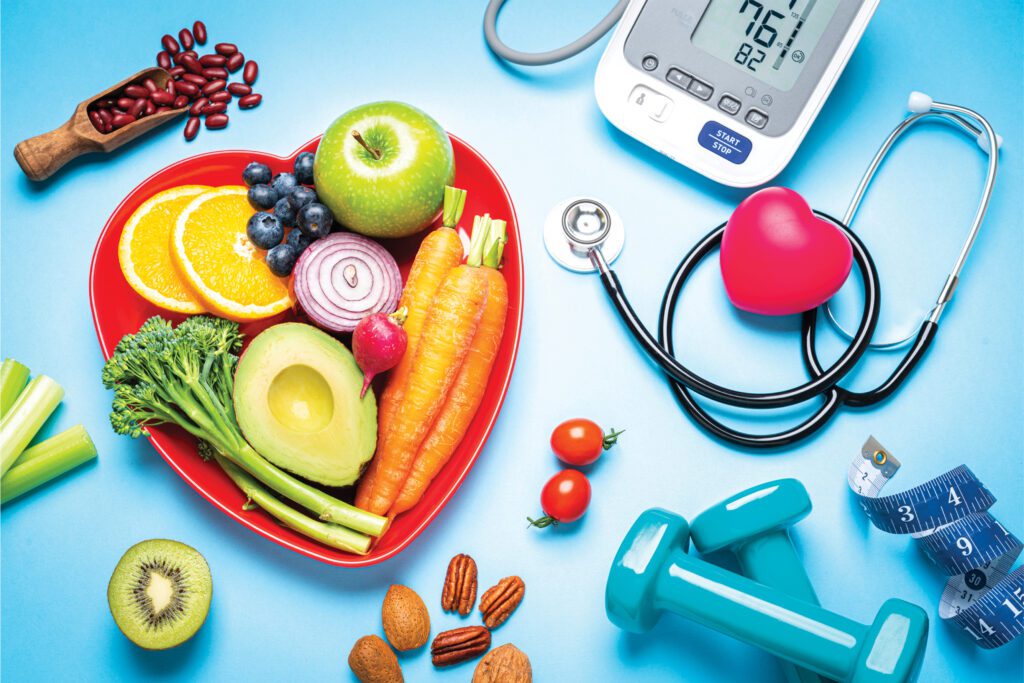February is American Heart Month – and while it’s a great time to break out your favorite red sweater, this season is also a time to raise awareness about the dangers of cardiovascular disease. With a little education and some positive lifestyle changes, you and your loved ones can see drastic improvements in your overall heart health!
The numbers speak for themselves: each year, cardiovascular disease accounts for 17.3 million deaths globally, and by 2030, that total is expected to rise to 26.3 million. In the United States, 1 in 3 deaths is caused by cardiovascular disease, equating to more deaths than all types of cancer combined. The good news? Nearly 80% of cardiac and stroke events could be prevented with the right information and action.

Understanding the Cardiovascular System
Also called the blood circulatory system, the cardiovascular system, according to Dr. Ondrej J. Lisy, a cardiologist at The Chattanooga Heart Institute at CHI Memorial, “is an organ system that permits blood to circulate and transport nutrients, oxygen, carbon dioxide, hormones, and blood to and from the cells in the body. It consists of the heart, arteries, veins, capillaries, and lymph vessels.” When functioning properly, the heart pumps oxygen-rich blood to the body’s tissues and other organs, while oxygen-depleted blood returns to the heart and then on to the lungs to receive fresh oxygen.
But when fatty deposits known as plaque build up along the walls of the arteries (a process known as atherosclerosis), or a blood clot forms, the heart, along with the entire cardiovascular system, is at risk for disease. Dr. Alison Bailey, a cardiologist with Erlanger Heart and Lung Institute, explains, “Cardiovascular disease is composed of a variety of issues including coronary heart disease, heart failure, high blood pressure, stroke, diseases of the arteries, and congenital disorders.”
Ignoring Your Body’s Needs
A poor diet, lack of exercise, and a host of additional factors can lead to a decline in cardiovascular health and an increased risk for cardiovascular disease. According to the American Heart Association, approximately 92.1 million American adults are living with a form of cardiovascular disease or the after-effects of stroke.
Chest pain, shortness of breath, heart palpitations, and dizziness or fatigue are all symptoms of cardiovascular disease that shouldn’t be ignored. “If symptoms are slowly progressing, consulting your physician is a great first step in getting treatment,” Dr. Bailey shares. “If they come on quickly or out of the blue, seek medical treatment immediately, as they may signal a heart attack.”
How to Strengthen Your Cardiovascular Health
The majority of reducing your risk of cardiovascular disease coincides with lifestyle changes, according to Dr. Bailey. “People who make it to age 50 and have normal blood pressure, normal glucose levels, eat a healthy diet, don’t smoke, get moderate exercise, and aren’t overweight have less than a 5% risk of developing cardiovascular disease in their lifetime. On the other hand, women with two or more risk factors at age 50 have a 50% lifetime risk, and men with two or more risk factors a 70% risk.”
The American Heart Association stresses the importance of these statistics in the organization’s 2020 Impact Goal: to strengthen the cardiovascular health of Americans by 20% and reduce deaths from cardiovascular diseases and stroke by 20% by 2020. To reach this goal, the organization has shared what it deems “Life’s Simple 7”:
#1. Quit smoking
Not only does smoking harm nearly every organ in the body (including the heart!), but it also increases your risk of atherosclerosis. Quitting smoking is one of the easiest preventative measures you can take regarding cardiovascular disease. Within one year of quitting, your risk of heart disease becomes half that of a smoker’s, and 15 years after quitting, your risk will drop to the same as a nonsmoker’s. If you’re having trouble putting down the cigarettes, seek a support group or cessation program that best fits your needs.


Understanding BMI
“There are several different formulas to determine your appropriate body weight. One of the most accepted is body mass index, or BMI,” says Dr. Lisy. “Your BMI is a measure of your weight in relation to your height.”
Most experts agree on the following classifications:
- People with a BMI of less than 18.5 are underweight.
- A BMI between 18.5 and 25 is ideal.
- Somebody with a BMI between 25 and 29 is classed as overweight.
- A person with a BMI over 30 is obese.
#2. Increase your physical activity
You’ve heard it said again and again, but exercise is essential to strengthening your cardiovascular health. Aim for 30 minutes of moderate activity a day at least five days a week. As a result, your heart will see increased efficiency as it pumps blood through your circulatory system. Also be mindful of the time you spend sitting down. Whether at your desk job or in front of the TV, studies show that prolonged sedentary time may increase your risk of cardiovascular disease.
#3. Eat better
Eating a balanced diet rich in whole grains, lean protein, vegetables, and fruits will work wonders toward your heart health. Oatmeal, nuts, berries, salmon, and legumes are all touted as heart healthy choices, so try to incorporate at least one or two of these foods daily. As much as possible, avoid sugar-sweetened drinks and processed foods high in trans fat and sodium.
#4. Maintain a healthy weight
In addition to raising blood pressure and cholesterol levels, excess body fat puts unnecessary strain on the heart. You can determine your ideal weight by calculating your BMI. Losing extra pounds can be accomplished through a combination of exercise and healthy eating; reach for high-fiber foods to help you feel full!
#5. Control cholesterol
Your body needs cholesterol to build cells, but too much “bad” cholesterol (LDL) can be harmful – contributing to blockage in the arteries. By controlling your cholesterol levels now, you can prevent future chest pain, heart attacks, and strokes. Boost your “good” cholesterol (HDL) by snacking on almonds, going for a run, and avoiding tobacco products.
#6. Reduce your blood pressure
High blood pressure, or hypertension, causes damage to your heart and blood vessels over time and can ultimately lead to a heart attack. Dubbed the “silent killer,” high blood pressure is difficult to diagnose until serious problems arise, so it’s crucial to have your blood pressure checked regularly. “Around 34% of American adults have high blood pressure, and nearly half of those people don’t have it under control,” says Dr. Lisy. “Based on the most recently published guidelines, blood pressure is elevated if it is more than 130/80 mmHg.”
If you find yourself with worrisome numbers, take a deep breath. Managing stress is one step toward lowering blood pressure. You’ll also benefit from limited alcohol consumption and routine physical activity, including walking, cycling, and swimming. If these measures do not help, seek medical advice soon!
#7. Improve your blood sugar levels
High blood sugar levels can lead to diabetes, and researchers believe that diabetes and cardiovascular disease go hand in hand. Fortunately, improving blood sugar levels can be as simple as avoiding sugary foods, such as juice and candy, and getting plenty of physical activity. If you have been diagnosed with diabetes, always take medication as directed by your doctor, in addition to eating well and exercising often.
Now is as good a time as any to make the pledge to concentrate on your health. Changing unhealthy habits can take time, but focus on making small improvements as you work toward your heart-healthy goals.


Dr. Alison Bailey
Cardiologist, Erlanger Heart and Lung Institute

